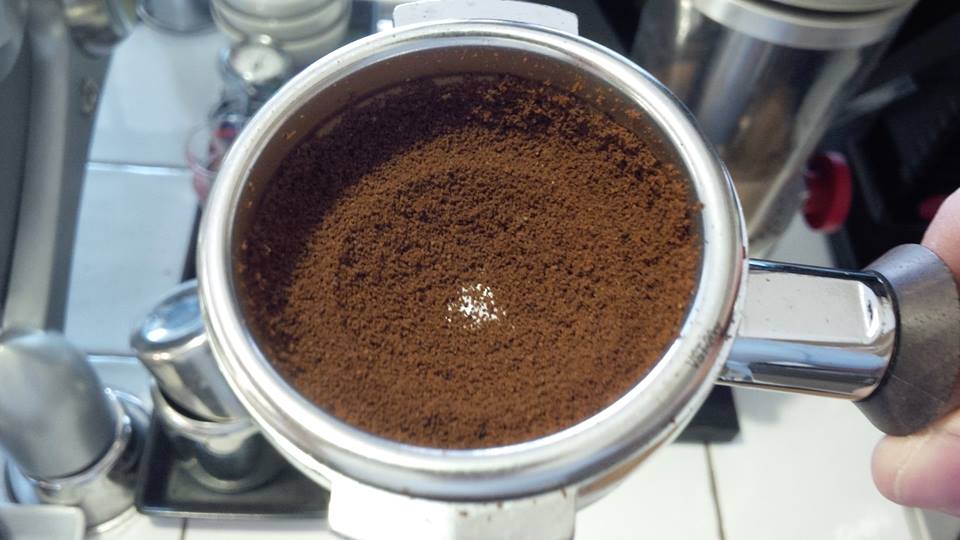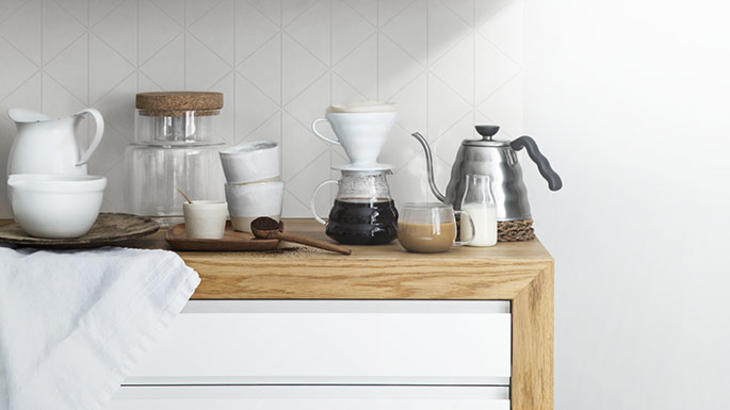Common sense of Espresso cooking | what are the tricks of "cloth powder" and "filling and pressing" to determine the outcome?
Professional coffee knowledge exchange more coffee bean information please follow the coffee workshop (Wechat official account cafe_style)
What we need to pay attention to when brewing espresso Espresso (to remind you, this is the definition of partial SCA, not IES):
1. Is the powder falling evenly?
two。 Whether the cloth powder is flat.
The purpose of the above two items is to let the powder in the filter cup be evenly distributed and there are no voids on the surface before filling and pressing, so that the density will not be uneven and a channel will not be formed. These two items are the most negligent steps in the production of Espresso, but they can completely determine the quality of Espresso in the very early days.
One: cloth powder Distribution

With regard to cloth powder, the important thing is not to wipe it with your hands, let alone to knock it hard with a powder hammer, which is completely a way of damaging equipment. First of all, you have to understand: cloth powder can not change the uneven density existing in the powder bowl, it will only change the surface, so the front action should be really in place, do not expect to dial back and forth to make the density uniform. Just after grinding the beans with the dispenser to pull out the powder, the handle powder bowl moves back and forth, or while plucking the powder while turning around, let the powder fall evenly in the filter cup, try not to have more places, some places are less, in case so, we have to gently pat the powder bowl to make it uniform.
According to Gwilym Davies, winner of the 2009 World Barista Competition (WBC), everything is decided when the bean grinder is powdered. After grinding, shake gently and smoothly on the table, and all the coffee powder will lie flat in the powder bowl!
Coffee powder evenly distributed in the powder bowl can be evenly pressed to avoid channel effect (water is a guy who specializes in eating soft persimmons, so when the cloth is uneven, the weak point is easy to be broken by water) otherwise the water will choose places with low resistance to flow, resulting in excessive extraction; while places with high resistance are underextracted, resulting in a terrifying cup of espresso. That's why it is said that cloth powder plays a very important role in the extraction of espresso, of course, it is also related to packing / tamping, extraction / extraction and other steps.
Second: pressing powder / filling Tamping
There are thousands of fan schools, only in the way individuals or stores want to present, there is no absolute difference between right and wrong.
The purpose and practice of pressing powder is simpler and simpler than most people think: put pressure on coffee powder to eliminate the gap between each other, and create a flat, uniform surface. That's all.
With regard to the way to hold the powder hammer, according to SCA, comfortable and ergonomic is the highest guiding standard! Yes, that's right, you can only apply the force easily, put it on the powder bowl accurately and carefully, apply the force vertically downward, and the light and heavy pressure powder end depends on personal preference and machine performance, but the future trend should be towards light pressure powder (measuring wind direction).
As Gwilym said, heavy powder has some imperfections:
1)。 The problem of poor efficiency and effectiveness. (some junior high school physics and mathematics will be mentioned here. If you don't want to see it, you can skip it.)
First simply assume the surface area of the 58mm powder bowl (π r ^ 2) ≈ 3.14x2.9x2.9=26.4 square centimeters.
Generally speaking, the pressing force of the powder is about 30~40lbs (13~18kg), which may be about 20kg at most, and the pressure on the powder bowl pressed powder is about 20kg/ 26.4cm ^ 2 ≈ 0.76bar. (1bar ≈ 1.02kg/ cm ^ 2)
On the other hand, the pressure during cooking is about 8bar~10bar, and the middle value is 9bar. Compared with the cooking pressure 9bar, the pressure of pressing powder 0.76bar is pitifully small, unless you are the Hulk. Otherwise, the effect is not very significant.
2)。 When pressing powder hard, improper force angle or poor posture will lead to a greater risk of wrist injury.
3)。 Heavy pressure is not easy to accurately control the force, and when correcting the pressing powder, it is also easier to destroy the uniformity of coffee powder distribution.
So, there is an easy and simple way, let's try our best to control the risk and use simple to make simple powder.
Put the powder hammer flat and evenly on the powder bowl, easily press down, make sure it is horizontal, and then gently pick it up vertically, whether you want to turn it or not. When rotating can help check whether the powder is horizontal or uniform, but the 2012 WBrC champion Matt Perger recommends not rotating the powder hammer, so as not to affect the density of pressed powder due to uneven rotation.
All right! Now, as long as you clean the excess coffee powder on the handle a little, you can go to the machine and brew it.
END
Important Notice :
前街咖啡 FrontStreet Coffee has moved to new addredd:
FrontStreet Coffee Address: 315,Donghua East Road,GuangZhou
Tel:020 38364473
- Prev

How does a novice brew good coffee at home? There are 5 secrets to successful cooking!
Professional coffee knowledge exchange more coffee bean information Please follow the coffee workshop (Wechat official account cafe_style) do you want to make yourself a good cup of coffee, but often get bogged down in the different equipment recommendations and introductions online? In fact, good coffee is not so rare. Mastering some basic knowledge and operation can make your coffee taste very different from that before. The following
- Next

Sensory Identification of Coffee III: improvement of Coffee Flavor description of Coffee Flavor and aroma
Professional coffee knowledge exchange more coffee bean information please follow the coffee workshop (Wechat official account cafe_style) [how to improve the sensory ability? Sensory separation] when using coffee, we mainly focus on the sensory system of taste, smell and feeling. What is taste? Everyone should be familiar with it, that is, sour, sweet, bitter, sweet and sweet, and coffee has four flavors at the same time.
Related
- Beginners will see the "Coffee pull flower" guide!
- What is the difference between ice blog purified milk and ordinary milk coffee?
- Why is the Philippines the largest producer of crops in Liberia?
- For coffee extraction, should the fine powder be retained?
- How does extracted espresso fill pressed powder? How much strength does it take to press the powder?
- How to make jasmine cold extract coffee? Is the jasmine + latte good?
- Will this little toy really make the coffee taste better? How does Lily Drip affect coffee extraction?
- Will the action of slapping the filter cup also affect coffee extraction?
- What's the difference between powder-to-water ratio and powder-to-liquid ratio?
- What is the Ethiopian local species? What does it have to do with Heirloom native species?

